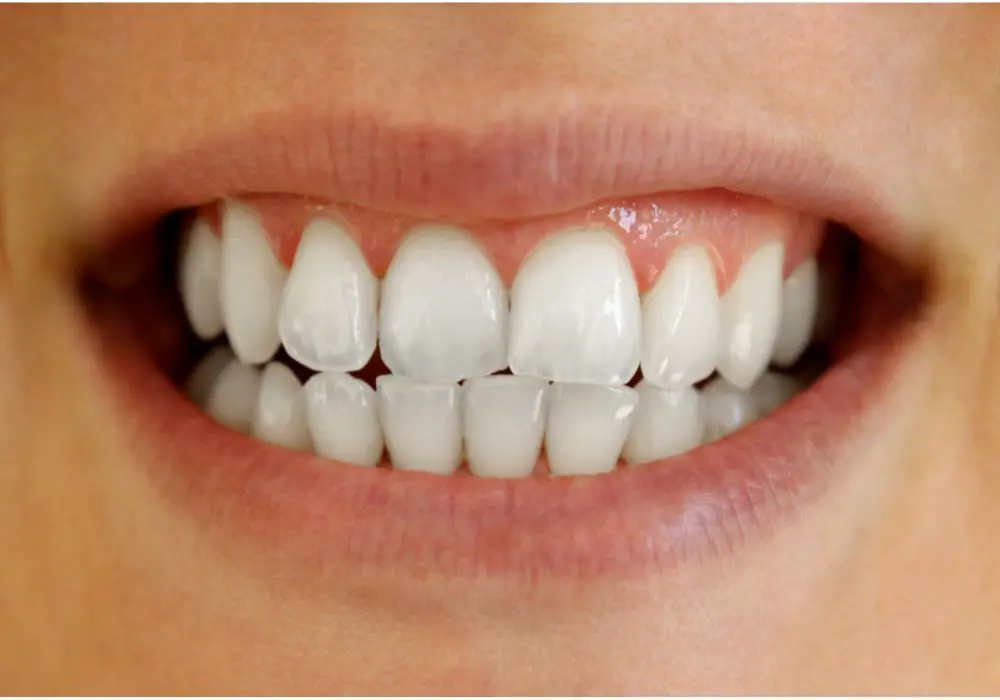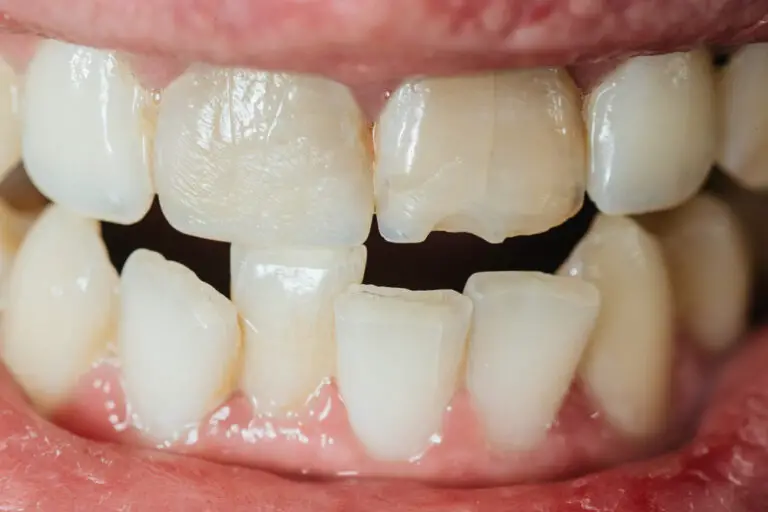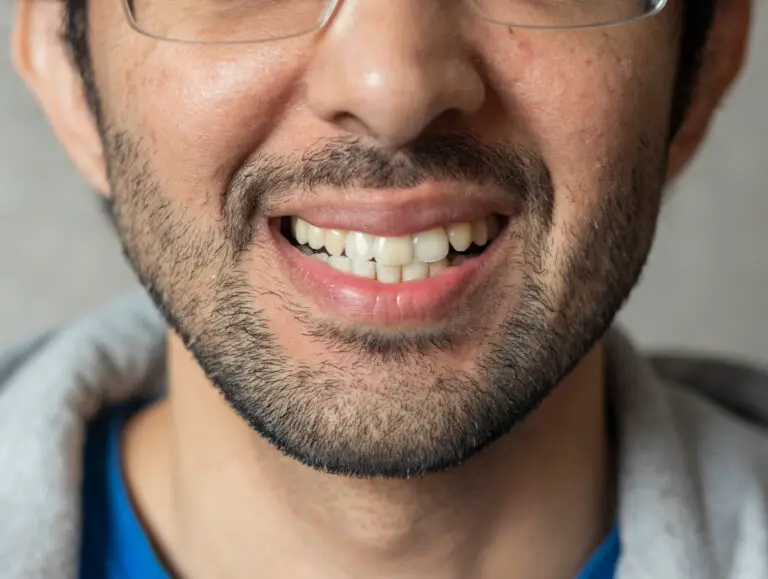Having noticeably large, protruding front teeth is a common issue that can significantly impact appearance and self-esteem. Braces are often the go-to solution prescribed to help fix alignment and spacing problems that contribute to buck teeth. But how well can braces reduce the actual size of extremely prominent front teeth? Here’s an in-depth look at the realities of what braces can achieve when it comes to correcting large front teeth.
What Causes Buck Teeth?

Buck teeth, or overly large front teeth, can be caused by various factors:
- Genetics – Inherited traits like excessively large teeth or small jaws increase chances of protrusion.
- Overjet – Excessive overjet, the gap between upper and lower teeth, allows front teeth to stick out.
- Missing Teeth – Lost back teeth removes needed support, enabling front teeth to shift forward.
- Thumb Sucking – Chronic thumb sucking beyond age 5 pushes front teeth outward.
- Tongue Thrusting – Pressing tongue against teeth instead of roof of mouth pushes teeth out.
- Poor Alignment – Crowding, gaps, or misaligned teeth can all contribute to buck teeth.
Getting orthodontic evaluation is important to determine the exact cause in order to customize appropriate treatment.
How Do Braces Move Teeth?
Braces utilize steady gentle pressure over time to slowly shift teeth into proper alignment. Here’s a look at the process:
- Brackets Bonded to Teeth – Brackets are affixed to each tooth with dental cement. These act as handles.
- Archwire Connects Brackets – A curved archwire threads through all the brackets, linking the teeth together.
- ** Orthodontist Adjusts Archwire** – At appointments, the wire is tightened and bent to apply optimal pressure on the teeth.
- Tooth Roots Resorb – The steady pressure causes tooth roots to gradually dissolve and shorten, enabling teeth to shift positions.
- Teeth Shift Toward Pressure – Slowly but surely, the teeth move toward the direction of pressure from the archwire.
This constant, gradual force is what allows the extensive tooth movement required to correct various orthodontic issues, including severely protrusive front teeth.
Key Factors That Enable Tooth Movement
Several biological factors make the extensive tooth movement from braces possible:
- Remodeling of Bone – Bone dissolves and rebuilds around the teeth as they shift positions.
- Periodontal Ligament Flexibility – The fibers surrounding each tooth are flexible enough to allow movement.
- Root Resorption – Shortening of tooth roots via resorption enables teeth to move greater distances.
Regular orthodontic adjustments maximize these natural processes to achieve desired correction over time.
Can Braces Substantially Reduce Buck Teeth?

Whether braces can successfully reduce the size of extremely large front teeth depends on several factors:
Severity of Protrusion
The more protruded the front teeth are before treatment begins, the harder it generally is for braces alone to resolve the issue. Braces work best for mild to moderate buck teeth. Very severe protrusion often requires extractions or surgery paired with braces for substantial improvement.
Available Space
The crowding and spacing of the surrounding teeth also impacts outcomes. If there is adequate space in the dental arches, the front teeth can be moved back into proper position. But in crowded mouths, there may not be enough room to sufficiently retract extremely protrusive teeth without extracting teeth first.
Tooth Anatomy
The natural shape and length of the tooth roots play a role as well. Short, blunted root structures allow for greater movement than long, tapered roots. The extent of possible tooth movement declines once root development finishes. So early correction while roots are still forming offers the most flexibility.
Dental Age of Patient
Younger patients tend to respond better to braces for correcting pronounced buck teeth. The active growth of the jaws along with incomplete root formation in children and teens permits the most dramatic improvements. Outcomes become much more limited in older patients with completed dental and jaw development.
Supplementary Orthodontic Techniques to Reduce Large Front Teeth
For cases of extreme protrusion beyond what braces alone can address, orthodontists often recommend supplemental treatments:
- Tooth Extraction – Removing premolar teeth creates space needed to retract front teeth into proper position. This approach also helps reduce crowding. Extractions are commonly done along with braces for severe buck teeth cases.
- Orthognathic Surgery – For adults with completed facial growth, moving the entire jaw may be required to get sufficient retraction of extremely protrusive front teeth. This corrective jaw surgery is performed along with orthodontic treatment.
- Temporary Anchorage – Devices like mini-screws or mini-plates can be inserted in the jawbone for enhanced orthodontic anchorage. This provides stronger leverage to pull back severely protruding front teeth.
- Clear Aligner Therapy – Used primarily for milder cases, clear aligners apply more gentle constant pressure which may limit how much buck teeth can be improved compared to braces.
- Tooth Remodeling – Reshaping or contouring protruding front teeth can provide temporary reduction but doesn’t address underlying alignment issues.
- Tooth Replacement – In some instances, dental crowns, veneers, or implants may be utilized to replace extremely bucked teeth and improve appearance. This involves permanently altering the teeth.
Treatment Duration

The amount of time it takes braces to reduce the size of protruding front teeth can vary substantially based on severity of the case:
- Mild cases of buck teeth may take just 12-18 months of bracing.
- Moderate buck teeth can require 18-24 months of treatment.
- Severe cases treated with extractions and surgery may take 2-3 years of orthodontic work.
Proper retainer wear after braces are removed is also crucial to prevent teeth from shifting back out of position. Keeping all orthodontic appointments and wearing braces as directed are key to achieving results in the shortest treatment timeframe.
Good Candidates
The best candidates for achieving worthwhile reduction in very protrusive front teeth using braces and orthodontic techniques are:
- Growing pre-teens and teens with enough jaw growth and dental development remaining
- Patients with mild to moderate buck teeth and adequate space in the dental arches
- Highly compliant patients who are able to wear braces consistently and keep all appointments
Those with extremely severe protrusion, short blunted tooth roots, highly crowded mouths, or completed facial growth may require supplemental treatments beyond just braces for sufficient correction. A thorough orthodontic evaluation is needed to determine appropriate options.
Estimating Potential Reduction
It’s challenging for orthodontists to predict exactly how much reduction in tooth size is realistically achievable for a patient using braces alone. But using x-rays, visual assessments, models, and measurements, they can analyze factors like:
- Angle and extent of protrusion
- Amount of overjet
- Quality of bone support around teeth
- Room available to move teeth back
This enables providing an approximate estimate for how much improvement is feasible with braces. On average, braces alone may produce about 3-5 mm of front teeth retraction in mild to moderate cases. More severe instances often call for additional retraction beyond 5mm.
Are Tooth Extractions Necessary?
Removing permanent teeth is a common tactic orthodontists use along with braces to help retract extremely protrusive front teeth. Some key considerations around extractions include:
- The upper and/or lower premolars are typically extracted because they are farthest from front teeth.
- Extractions may be performed one arch at a time or both arches simultaneously depending on the spacing needed.
- Removing healthy permanent teeth is generally avoided if possible in very young patients to prevent future problems.
The orthodontist will be able to determine if extractions are required based on precise space analysis and the goal for ideal alignment. In general, more severe buck teeth often do warrant extractions to achieve sufficient correction.
Adult Braces Considerations

Adults seeking orthodontic treatment for longstanding buck teeth need to factor in a few additional points:
- Braces alone may not produce adequate movement due to completed facial growth.
- Shorter fully formed roots in adults provides less ability for braces to retract and tip teeth.
- Orthognathic jaw surgery is more likely required along with braces.
- Temporary anchorage can provide enhanced leverage for moving teeth.
- Clear aligners or ceramic braces offer more aesthetic options.
- Overall treatment time may be extended compared to adolescents.
Customized treatment plans will be made based on an adult patient’s specific scenario. Close coordination between the orthodontist and oral surgeon allows for integrated treatment when surgery is indicated.
Can Braces Also Correct Underbite?
Yes, braces have proven effective at resolving underbite issues that frequently accompany protruded front teeth. Orthodontists can include particular wires, elastics, and anchorage configurations that bring the lower jaw forward while simultaneously moving the upper front teeth back. This combination approach helps fix both the underbite and buck teeth problems together.
Benefits of Early Treatment
Seeking orthodontic treatment earlier while jaw growth is still actively occurring provides the greatest chance for fully correcting pronounced buck teeth. Typical early treatment protocols include:
- Initial treatment during mixed dentition around ages 8-10.
- Headgear therapy to restrain excessive growth of protruding front teeth.
- Close monitoring and guidance of eruption as permanent teeth come in.
- Possible second phase of treatment with full braces during the teenage years.
Early intervention can reduce or avoid the need for extractions or surgery later. The key is commitment to diligent wear of all appliances as directed. Poor patient cooperation can limit results.
Maintaining Results Long-Term
Once braces successfully resolve buck teeth concerns, retainers are required indefinitely to prevent teeth from relapsing back out of position. Retention options include:
- Removable retainers that are worn at night or part-time during the day
- Fixed retainers bonded permanently behind the front teeth
- Potential lifetime retainer wear, especially at night, if recommended by the orthodontist
Ongoing diligent retainer use is crucial for maintaining achieved results long-term. Regular dental checkups enable monitoring for any relapse that may require additional orthodontic correction.
Risks and Limitations
While complications are uncommon with good oral hygiene and appliance care, some potential risks and limitations to consider include:
- Root Resorption – In some instances, excessive shortening of tooth roots may occur, increasing mobility.
- Periodontal Issues – Poor cleaning can lead to gingivitis, gum recession, and other periodontal problems.
- Bone Loss – Pressure from braces may cause minor bone loss around teeth in rare cases.
- Relapse – Insufficient retainer wear allows teeth to drift back out of position.
- Aesthetic Limitations – Braces alone cannot fully correct extremely severe buck teeth.
- Discomfort – Soreness is expected after adjustments but extreme constant pain may indicate an issue.
Close compliance with orthodontist recommendations helps minimize risks. Promptly report any concerns so they can be evaluated and managed.
Alternatives to Braces
Besides traditional braces, options that may help reduce the appearance of extremely protrusive front teeth to some degree include:
- Clear Aligners – Used primarily for milder cases, aligners apply more gentle constant pressure with no brackets or wires. Results may be more limited compared to braces.
- Composite Reshaping – Placing bonded resin material can reshape edges of front teeth for a temporary cosmetic improvement. Does not move teeth.
- Dental Veneers – Veneers are thin facings that can mask the appearance of buck teeth but require permanantly altering the teeth.
- Crowns – In some situations, dental crowns may be placed on front teeth to improve aesthetics. This also involves removing tooth structure.
A thorough orthodontic evaluation helps determine the best approach based on the particular case. Braces tend to provide the most effective functional correction, especially for teens and younger patients.
Is There an Age Limit for Braces?
There is no maximum age for braces. An increasing number of adults are seeking orthodontic treatment. While results may be more limited than in growing children, options like clear aligners and ceramic braces offer more discreet choices for adults concerned about aesthetics.
As long as any specific health concerns like periodontal disease, root anatomy, and potential surgical needs are fully addressed, age itself is typically not a barrier to successful brace treatment. Proper motivation to follow instructions is actually more important than age when it comes to achieving a good outcome.
Frequently Asked Questions
How long will I need braces?
Treatment time with braces ranges from 12-24 months for mild buck teeth to 18-36 months for more severe protrusion. Keeping all orthodontic appointments and diligent brace wear helps minimize overall treatment duration.
Will braces be painful?
Some mild soreness is common following adjustments as teeth shift. Discomfort typically peaks at 2-3 days then subsides. Severe constant pain may indicate a problem needing attention. Proper cleaning and orthodontic wax helps manage discomfort.
Can I still play sports with braces?
Yes, you can participate in sports with braces as long as you take precautions. Wearing a mouthguard helps protect teeth from injury. Let your orthodontist know about any contact sports you play.
How often are orthodontic adjustments needed?
Adjustments are typically needed every 4-6 weeks on average. Your orthodontist will recommend a specific timeline based on your individualized treatment plan. Keeping all your adjustment visits is crucial for achieving results efficiently.
What dietary changes are required?
Avoiding excessively sticky, hard, crunchy, and chewy foods helps prevent brace damage. Your orthodontist will provide guidance on recommended dietary modifications to follow while you have braces.
Conclusion
Having pronounced buck teeth can be challenging but modern orthodontic techniques offer hope for significant improvement. While limitations exist in some cases, braces remain the standard treatment for correcting protrusive front teeth, especially in growing children and teens. Working closely with your orthodontist allows developing a tailored plan to meet your needs and goals.






